Villeneuve-lès-Avignon & the Simple Pleasures of Southern France
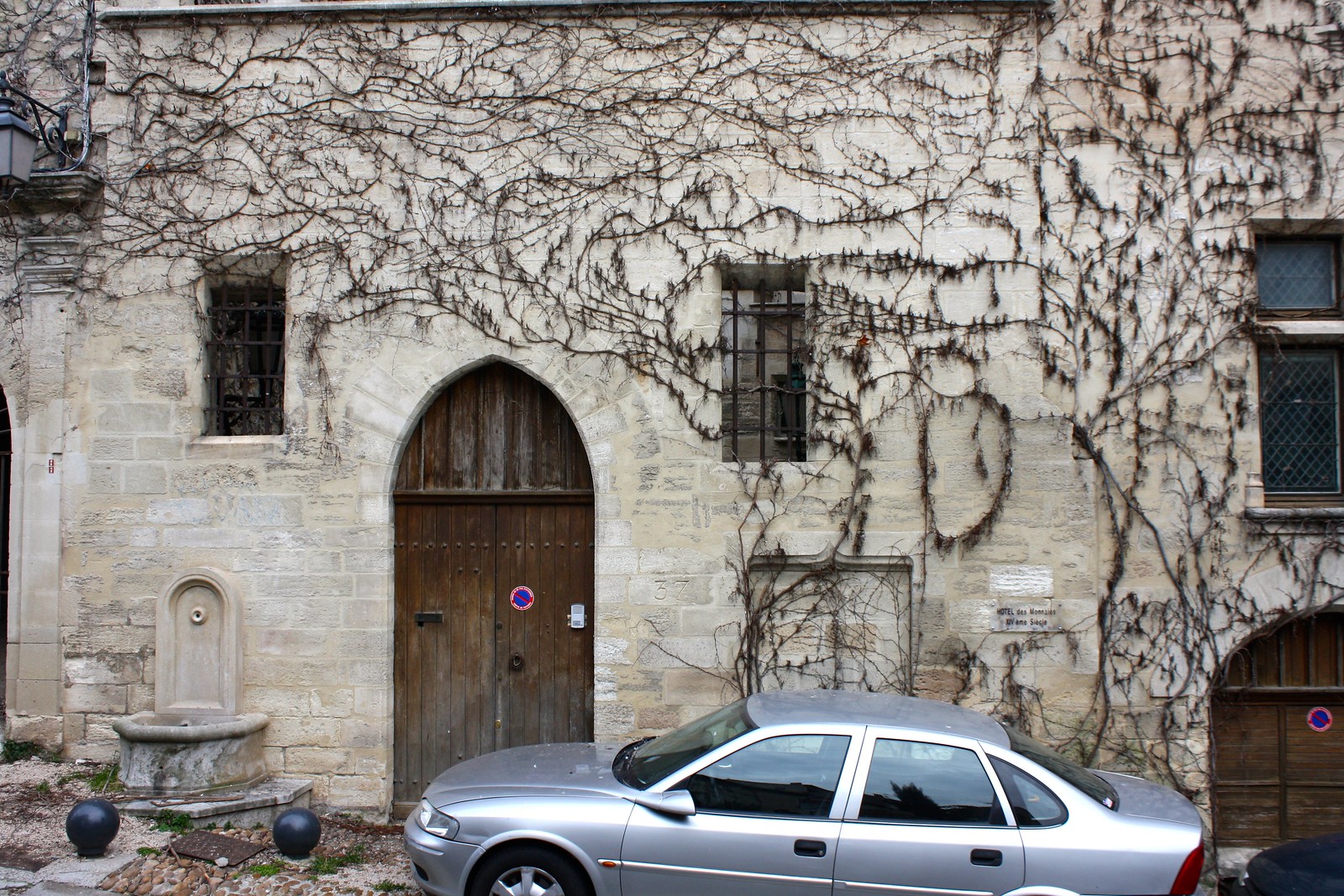 |
| Ivy-covered house |
When my friend Melissa and I took a bridge across the Rhône River into Villeneuve-lès-Avignon last February, the city reminded us a lot of what in Spain they call pueblos: villages in the countryside where traditional, slower ways of life continue, where cozy family homes line the streets, and where you can say buenos días to people you pass on the sidewalk. Replace “buenos días” with “bonjour” and that’s exactly what Villenueve felt like.
 |
| Our friend the chat |
We didn’t exactly go out of our way to check out this charming southern French town, as it’s simply on the other side of the Rhône from the tourist hotspot of Avignon. In French placenames, lès simply means “near,” so you might translate the name as “New Town Near Avignon.” After a jam-packed morning crawling around a gigantic papal palace and getting a French nursery rhyme stuck in our heads, we decided to cross the river into this tourist-free town to relax for a bit.
 |
| Shutters, doors, and curtains |
As my friend and I wandered around the quiet, residential streets that branched out from the main square, we were struck at just how pretty Villeneuve was. All of the houses were built in the same soft, local limestone, some with pastel-painted doors and shutters, others with ivy creeping up the walls. One home had a cheeky “Beware of Dog” sign on the mailbox that translated to “Warning: Kind Little Dog.”
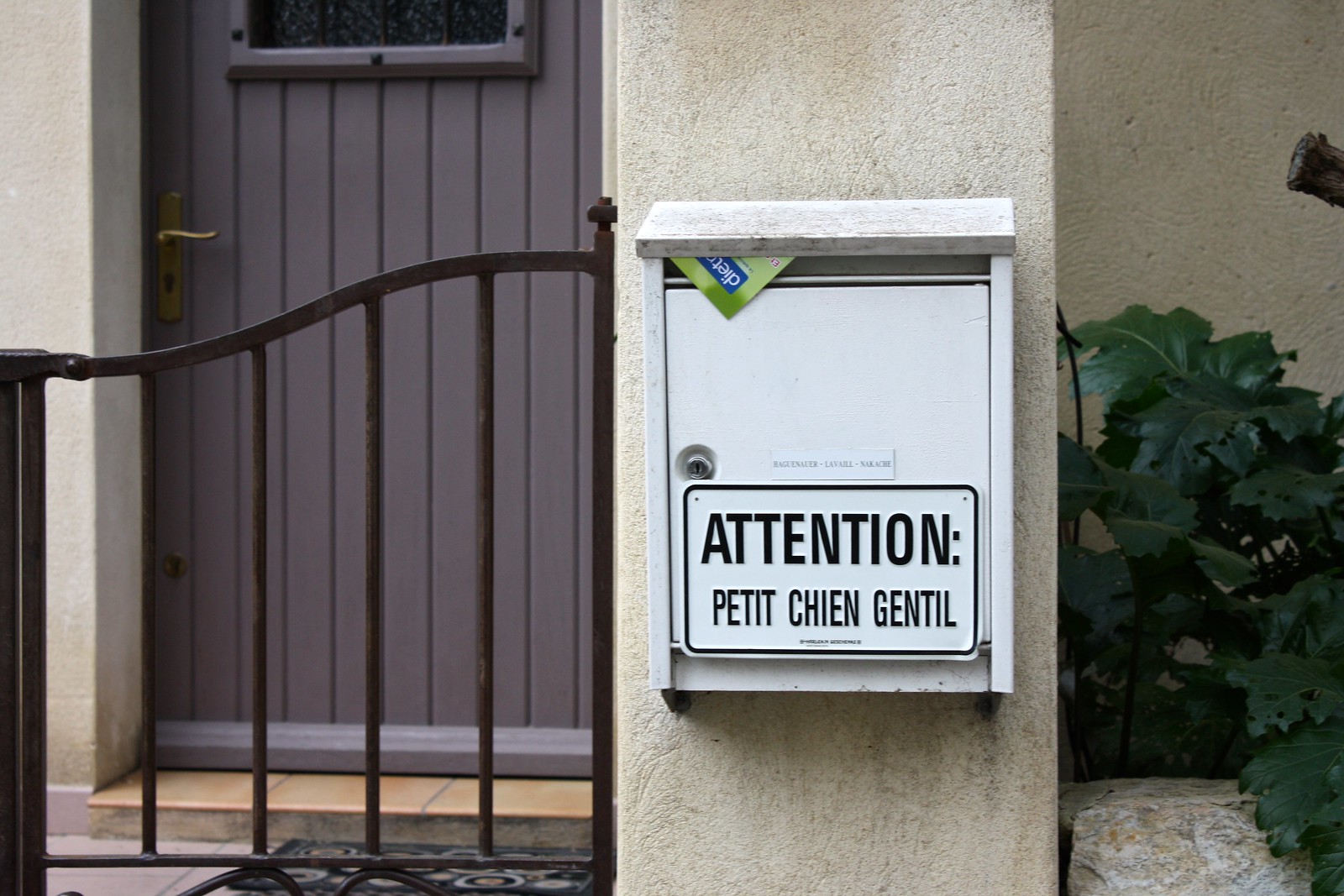 |
| Tongue-in-cheek beware of dog sign |
Although Avignon and Villeneuve are tightly connected with multiple bridges today, the Rhône River once marked the boundary between the Kingdom of France and the papal territory of Comtat Venaissin. It wasn’t until the French Revolution that the region around Avignon became part of modern France. Even now, when you cross the bridge, you leave the region of Provence and enter Languedoc.
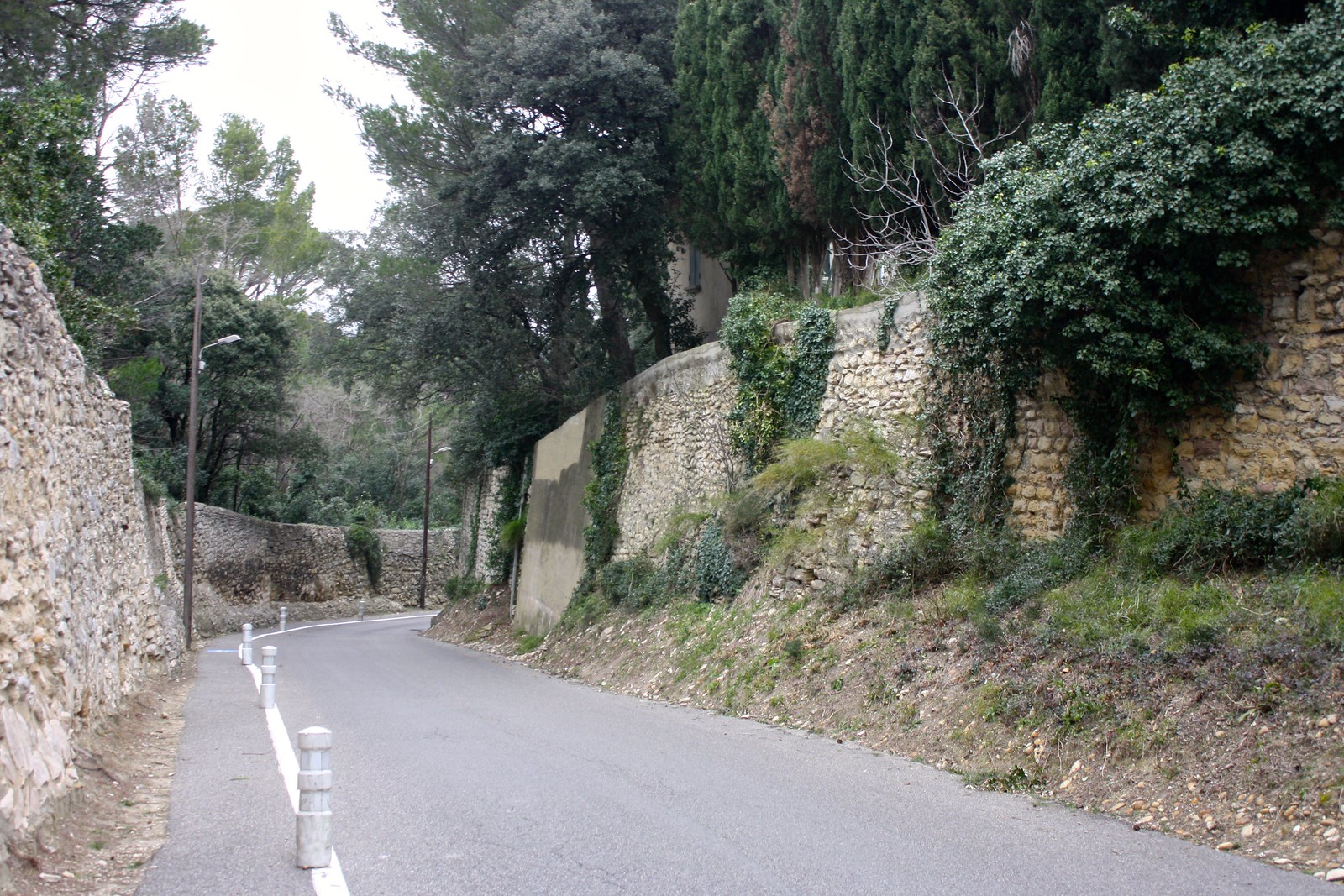 |
| Strolling through gardens |
Since Villeneuve was a major French border outpost in the Middle Ages, the king supplied the town with a fortified gatehouse on the riverbank where the Pont Saint-Bénézet bridge once ended and also constructed a gargantuan castle on the hilltop, the Fort Saint-André. There’s also a sprawling former Carthusian monastery with great views of the fortress, but we skipped all these monuments in favor of an afternoon snack of butter croissants at a local bakery. Ah, France.
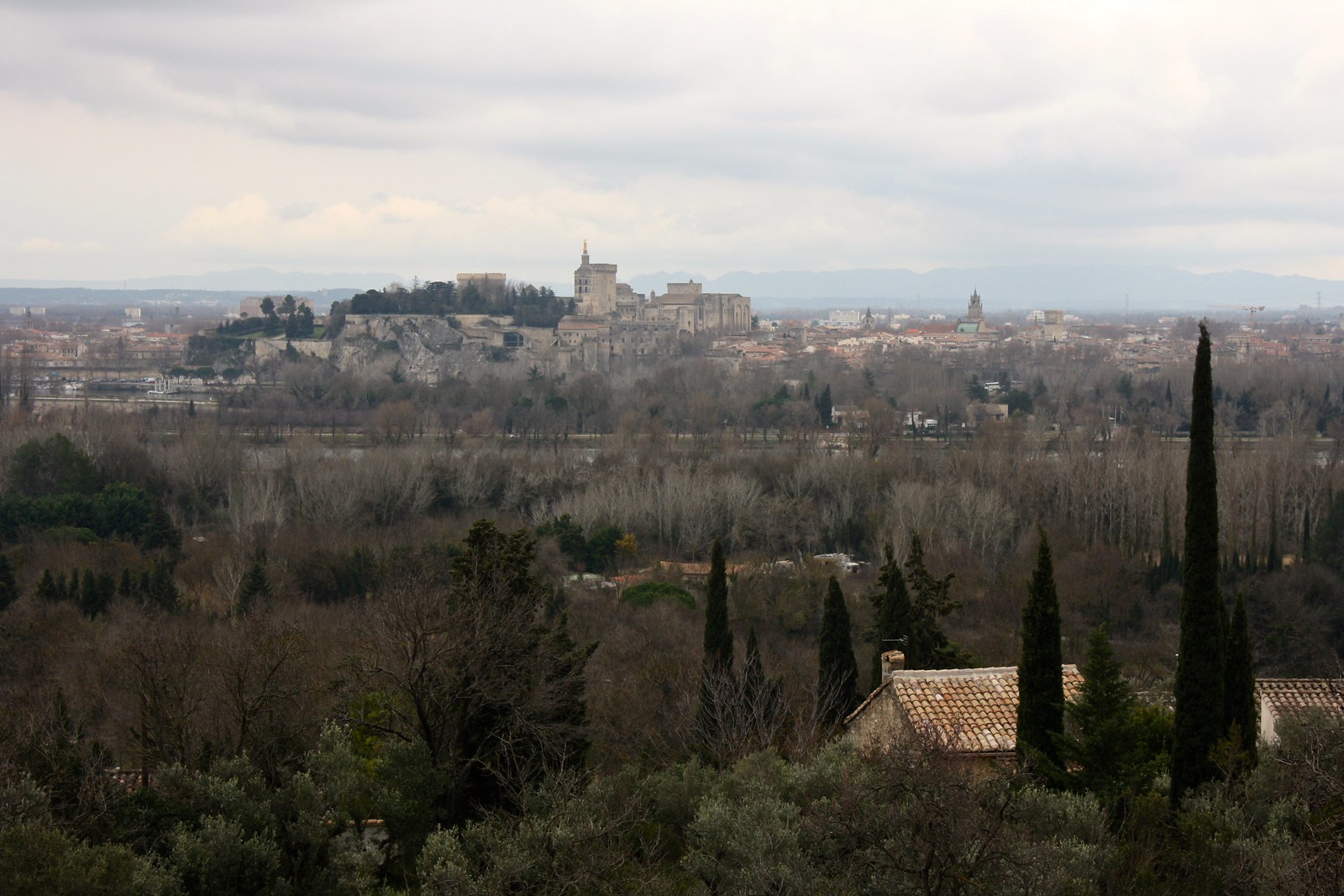 |
| View of Avignon across the river |
We did make the hike up the hill to the Saint-André fort, and next to its walls we discovered a small grove of olive trees—this is Mediterranean Europe, after all. Olive groves no longer hold the same novelty to me as they did three years ago, when I moved abroad to teach English in the capital of Spain’s olive oil production, Jaén province. But here and there an almond tree mingled with the olive trees, a few stray black almond hulls clinging to the branches as they shivered in the wind. A French father and his son were thwacking the trees to collect what little remained of the nut harvest, but soft pink flowers had already begun to blossom.
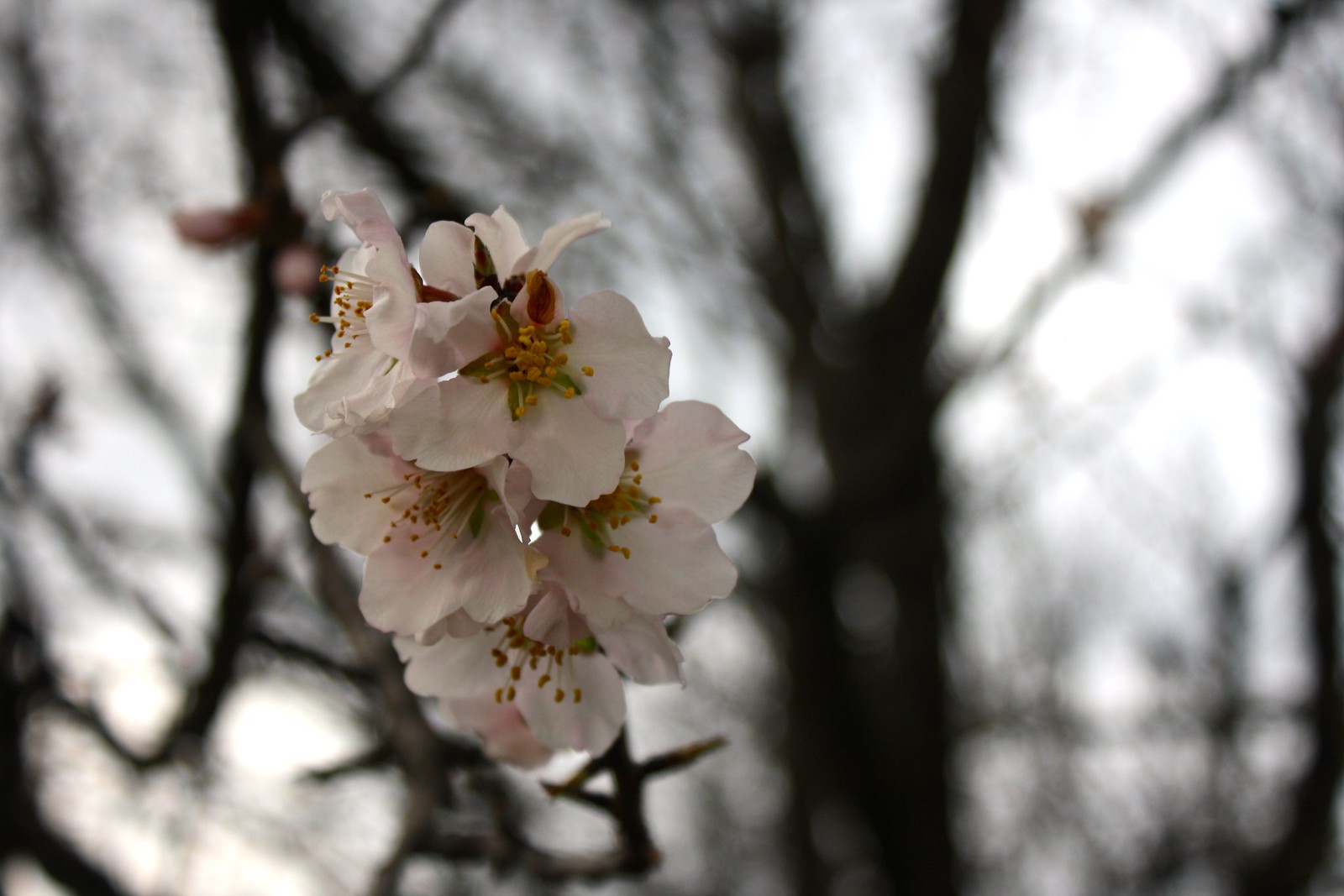 |
| Almond blossoms |
The fort was closed, a drizzle was beginning to fall, and the gray, late-winter sky was fading fast, so we decided to head back into downtown Villeneuve for our second afternoon snack (don’t judge…we were on vacation!). We actually returned to the same bakery we had our croissants at, surprising the cheery owner with our repeat business. With almonds fresh on our mind, there was simply no other choice but to order that perfect combination of almond flour and meringue: macarons.
Do you crave that big city life or do you prefer kickin’ it back in small towns? Comment below in the discussion thread!


